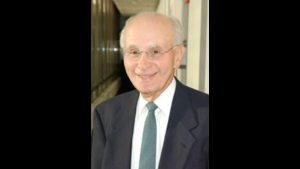Safer Playground, Slippery Slope
Published July 5, 2017
Faced with the choice of safeguarding the surface of a preschool playground at a mid-Missouri church or maintaining a strong, traditional separation of church and state, seven justices of the U.S. Supreme Court sided with the preschoolers.
How far the case will reverberate is anybody’s guess.
Will last week’s ruling lead to approval of public money for religious schools and other breaches of a doctrine that the framers of the Constitution wisely put into place?
ADVERTISEMENT
Or will the ruling have limited impact, as expressed in a footnote to the majority opinion:
“This case involves express discrimination based on religious identity with respect to playground resurfacing. We do not address religious uses of funding or other forms of discrimination.”
Chief Justice John Roberts and two colleagues would not sign off on that footnote, showing the various ramifications of the issue over whether Trinity Lutheran Church in Columbia should have been eligible for a grant from the state of Missouri to fund a rubberized surface for its playground.
The majority opinion — echoed by some Orthodox Jewish and day school reaction — said that denying the church’s eligibility for the money solely because it is a religious institution violates the free exercise clause of the First Amendment.
“There is no dispute that Trinity Lutheran is put to the choice between being a church and receiving a government benefit,” the opinion said flatly. “The rule is simple: No churches need apply.”
ADVERTISEMENT
Comparing Missouri’s regulations to a Maryland law that barred Jews from public office nearly 200 years ago, the ruling added that “the result of the State’s policy is nothing so dramatic as the denial of political office. The consequence is, in all likelihood, a few extra scraped knees. But the exclusion of Trinity Lutheran from a public benefit for which it is otherwise qualified, solely because it is a church, is odious to our Constitution all the same, and cannot stand.”
In her dissent, Justice Sonia Sotomayor, backed by Justice Ruth Bader Ginsburg, forcefully and eloquently undercut the notion that the historical precedent should so easily be eclipsed.
“This case is about nothing less than the relationship between religious institutions and the civil government — that is, between church and state,” she wrote. “The Court today profoundly changes that relationship by holding, for the first time, that the Constitution requires the government to provide public funds directly to a church.
“Its decision slights both our precedents and our history, and its reasoning weakens this country’s longstanding commitment to a separation of church and state beneficial to both.”
Sotomayor feared that the opinion might result in separation between church and state becoming “a constitutional slogan, not a constitutional commitment.”
As a practical matter, the church could now take part in the resurfacing program anyway, because Eric Greitens, Missouri’s first Jewish governor, reversed the earlier policy shortly after taking office in January. He hailed the Supreme Court decision as a victory for people of faith, but being devout and wanting to keep faith and government apart are not mutually exclusive.
Underscoring that point, the American Civil Liberties Union and the Anti-Defamation League criticized the court’s weakening of the church-state wall. The ADL said the ruling harms both religion and government.
“Allowing churches and other religious groups to compete for direct government funds is bad for religion,” the group said. “States should not be in the religiously divisive business of choosing who, from among diverse houses of worship, should receive public dollars. Such a process also invites government oversight of internal operations of houses of worship and religious groups.”
Whether the decision leads to a slippery slope that ends in school vouchers and other ways for public money to fund parochial interests, remains to be seen. The ruling is likely to unleash a flood of litigation on both sides of the issue.
Still, the court did not take the sweeping step of striking down the overall prohibition in the constitution of Missouri and many other states barring tax money from going to religious institutions. Ideally, Justice Stephen Breyer’s brief commentary will stand as a continuing bulwark against the misdirection of public funds.
“Public benefits come in many shapes and sizes,” he wrote. “I would leave the application of the Free Exercise Clause to other kinds of public benefits for another day.”
When that day comes, the court would be wise to heed the caution once expressed by retired Justice Sandra Day O’Connor:
“Those who would renegotiate the boundaries between church and state must therefore answer a difficult question: Why would we trade a system that has served us so well for one that has served others so poorly?”
Amen.














